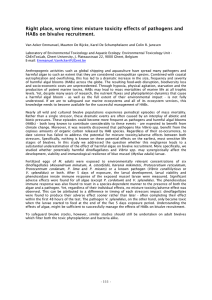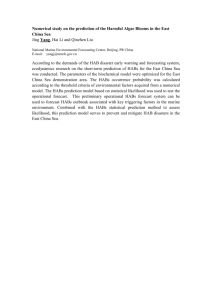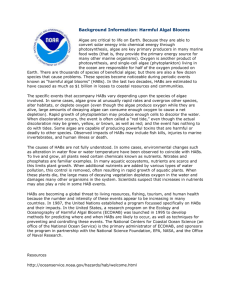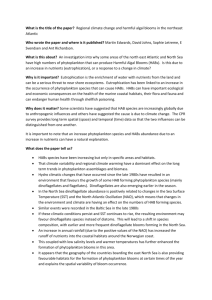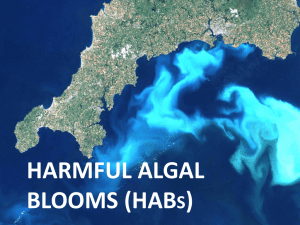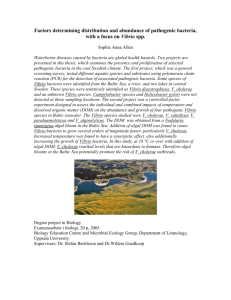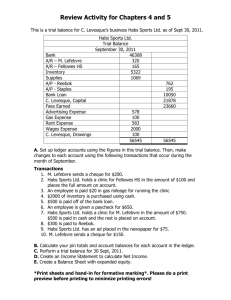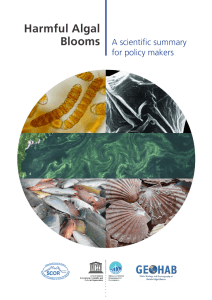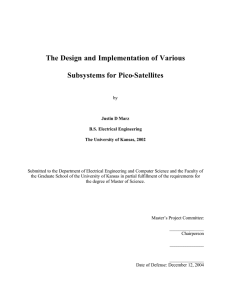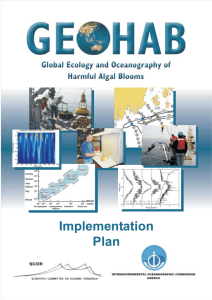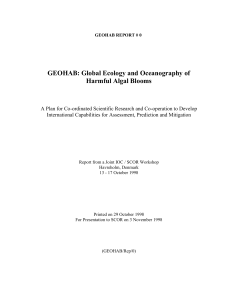Interaction of marine pathogens and Harmful Algae (HAB): effect
advertisement
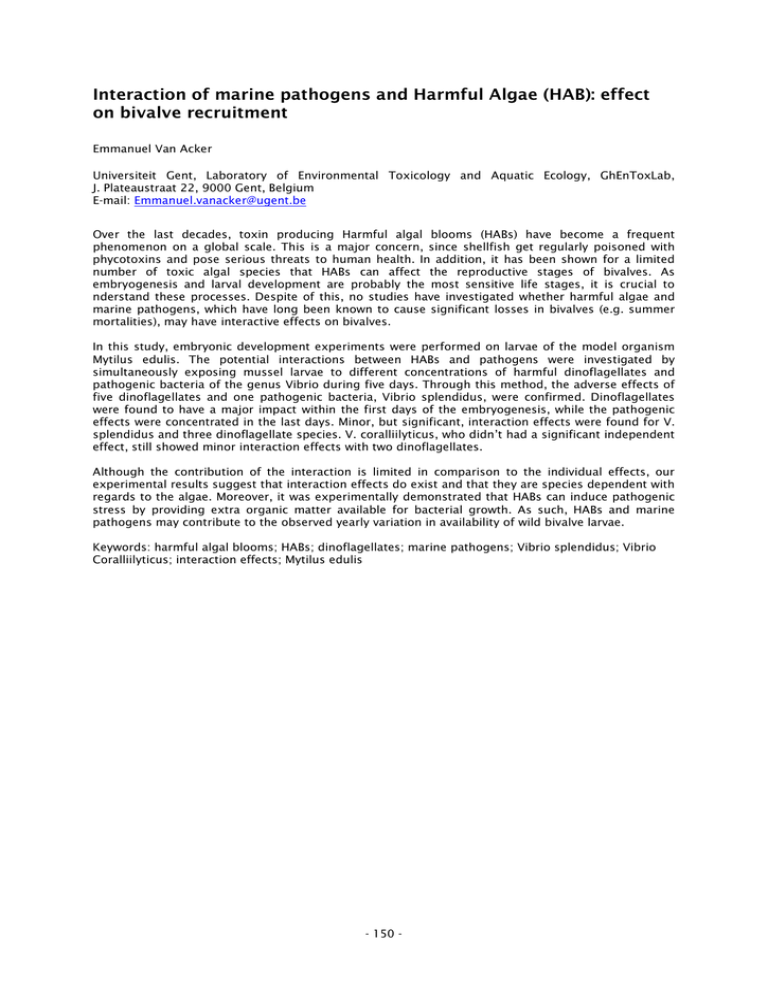
Interaction of marine pathogens and Harmful Algae (HAB): effect on bivalve recruitment Emmanuel Van Acker Universiteit Gent, Laboratory of Environmental Toxicology and Aquatic Ecology, GhEnToxLab, J. Plateaustraat 22, 9000 Gent, Belgium E-mail: Emmanuel.vanacker@ugent.be Over the last decades, toxin producing Harmful algal blooms (HABs) have become a frequent phenomenon on a global scale. This is a major concern, since shellfish get regularly poisoned with phycotoxins and pose serious threats to human health. In addition, it has been shown for a limited number of toxic algal species that HABs can affect the reproductive stages of bivalves. As embryogenesis and larval development are probably the most sensitive life stages, it is crucial to nderstand these processes. Despite of this, no studies have investigated whether harmful algae and marine pathogens, which have long been known to cause significant losses in bivalves (e.g. summer mortalities), may have interactive effects on bivalves. In this study, embryonic development experiments were performed on larvae of the model organism Mytilus edulis. The potential interactions between HABs and pathogens were investigated by simultaneously exposing mussel larvae to different concentrations of harmful dinoflagellates and pathogenic bacteria of the genus Vibrio during five days. Through this method, the adverse effects of five dinoflagellates and one pathogenic bacteria, Vibrio splendidus, were confirmed. Dinoflagellates were found to have a major impact within the first days of the embryogenesis, while the pathogenic effects were concentrated in the last days. Minor, but significant, interaction effects were found for V. splendidus and three dinoflagellate species. V. coralliilyticus, who didn’t had a significant independent effect, still showed minor interaction effects with two dinoflagellates. Although the contribution of the interaction is limited in comparison to the individual effects, our experimental results suggest that interaction effects do exist and that they are species dependent with regards to the algae. Moreover, it was experimentally demonstrated that HABs can induce pathogenic stress by providing extra organic matter available for bacterial growth. As such, HABs and marine pathogens may contribute to the observed yearly variation in availability of wild bivalve larvae. Keywords: harmful algal blooms; HABs; dinoflagellates; marine pathogens; Vibrio splendidus; Vibrio Coralliilyticus; interaction effects; Mytilus edulis - 150 -
